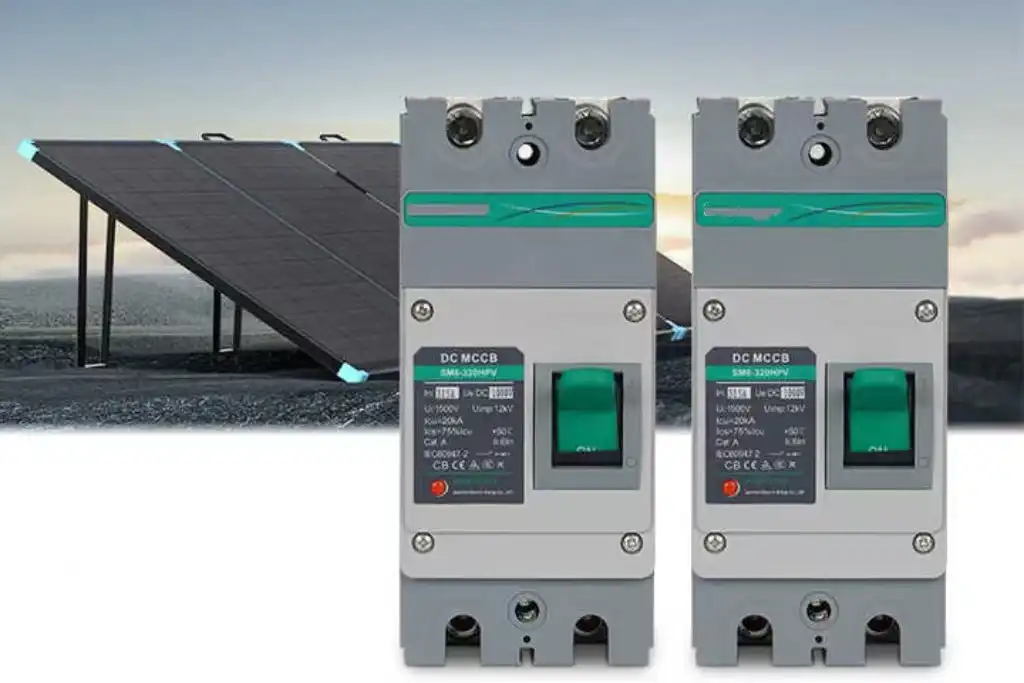For the power system, molded case circuit breakers (MCCBs) are fundamental equipment that makes the circuit safe. DC and AC systems require entirely different considerations for MCCB design and usage. This paper will explore major differences between AC MCCB and DC MCCB to enable engineers and procurement personnel to make better decisions
Differences in working principle and arc extinguishing mechanism
AC MCCB: AC power has a periodic zero crossing (50/60Hz), and the arc can easily be extinguished when the current naturally crosses zero. Therefore, the arc extinguishing chamber design for MCCB communication is relatively simpler, and usually entails the use of disconnecting grids or gas arc extinguishing technology to meet the demands
DC MCCB: DC current flows only one way and has no natural zero crossing, and the arc simply keeps burning and is not self-extinguished. DC MCCBs thus must use more advanced arc extinguishing techniques, such as magnetic blow coils (which stretch the arc out by a magnetic field) or multi-stage arc extinguishing chamber design, to forcibly interrupt the current
Comparison of Technical Parameters and Standards
| Parameter/Standard | DC MCCB | AC MCCB |
| Rated Voltage | Up to 1500V (Photovoltaic systems) | Normally ≤690V |
| Breaking Capacity | Requires matching time constant (e.g., T=4ms or 15ms) | Based on short-circuit current value (e.g., 50kA) |
| Arc ExtinguishingMechanism | Magnetic blow coil, multi-stage arc extinguishing chamber | Breaker column, gas arc extinguishing |
| Typical ApplicationScenarios | Photovoltaic, energy storage, rail transportation | Building distribution, industrial control |
Core design differences
Contact Material and Structure
DC MCCB contacts need to withstand higher arc energy, usually using silver based alloys or copper tungsten composite materials, and increasing the contact spacing to reduce the risk of arc reignition
The communication MCCB contact material is mainly silver nickel alloy, and the design pays more attention to the stability of contact resistance
Arc extinguishing chamber design
The DC arc extinguishing chamber needs to be equipped with a magnetic blowing device to push the arc into the arc extinguishing grid through a magnetic field, extending the arc path to accelerate cooling
The communication arc extinguishing chamber relies on the zero crossing characteristic of current, divides the arc through metal grids, and uses a medium (such as air or ceramic) for cooling
Application scenarios and selection suggestions
Typical Applications of DC MCCB
Photovoltaic power generation system: It is necessary to match the open circuit voltage of the components (such as selecting MCCB with 1800V withstand voltage for 1500V system), and consider PID effect protection
Rail transit: used for DC 750V or 1500V contact network protection, must meet the EN 50155 anti vibration standard
Energy storage system: It needs to support high rate charging and discharging impacts, and be equipped with backup protection devices to prevent short circuits
Typical Applications of Communication MCCB
Building power distribution: The main switchgear adopts Class I breaking capacity (≥ 50kA), and the floor distribution box can choose Class II (20kA)
Industrial control: requires integration of overload, short circuit, and ground fault protection, supporting remote communication function
Brand Choice
Choosing ONESTO’s molded case circuit breakers, we offer a variety of DC and AC MCCBs to comprehensively protect circuits from overload and short circuit effects. With 19 years of industry experience, we promise to provide you with the most competitive prices and excellent quality
summarize
It is necessary to understand the difference between DC MCCB and AC MCCB if you are working with electrical systems. The difference in the type of current, structure, internal build, and breaking ability separates these circuit breakers from each other. Therefore, it is necessary to choose the correct MCCB for your application. By investing money in reliable and high-quality MCCBs produced by reputed manufacturers, you can ensure the safety and efficiency of your circuits for the next couple of years.
Here are some information that you may have just been interested in:
The difference between AC MCB and DC MCB
Exploring the Components of Molded Case Circuit Breakers
Key factors to consider when choosing a molded case circuit breaker



